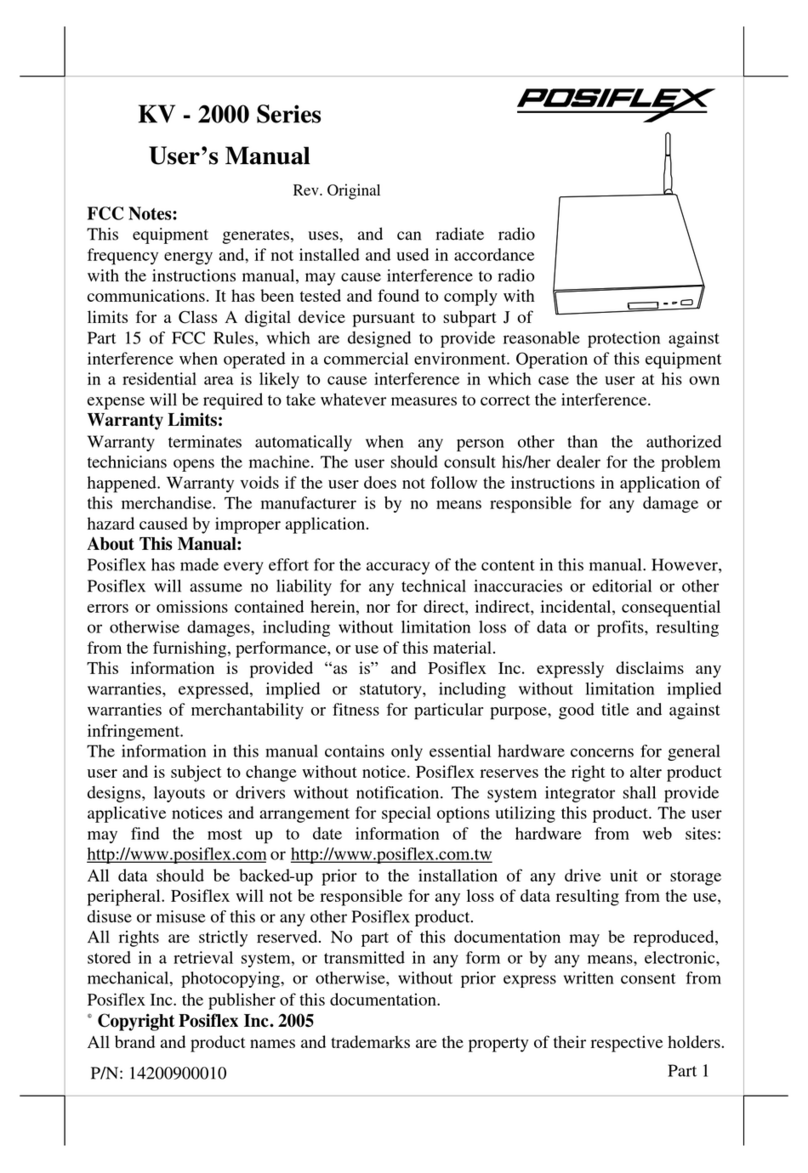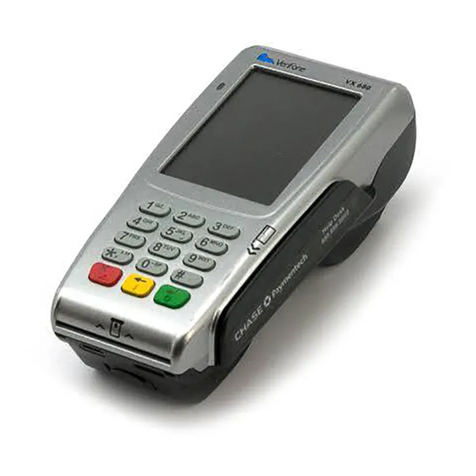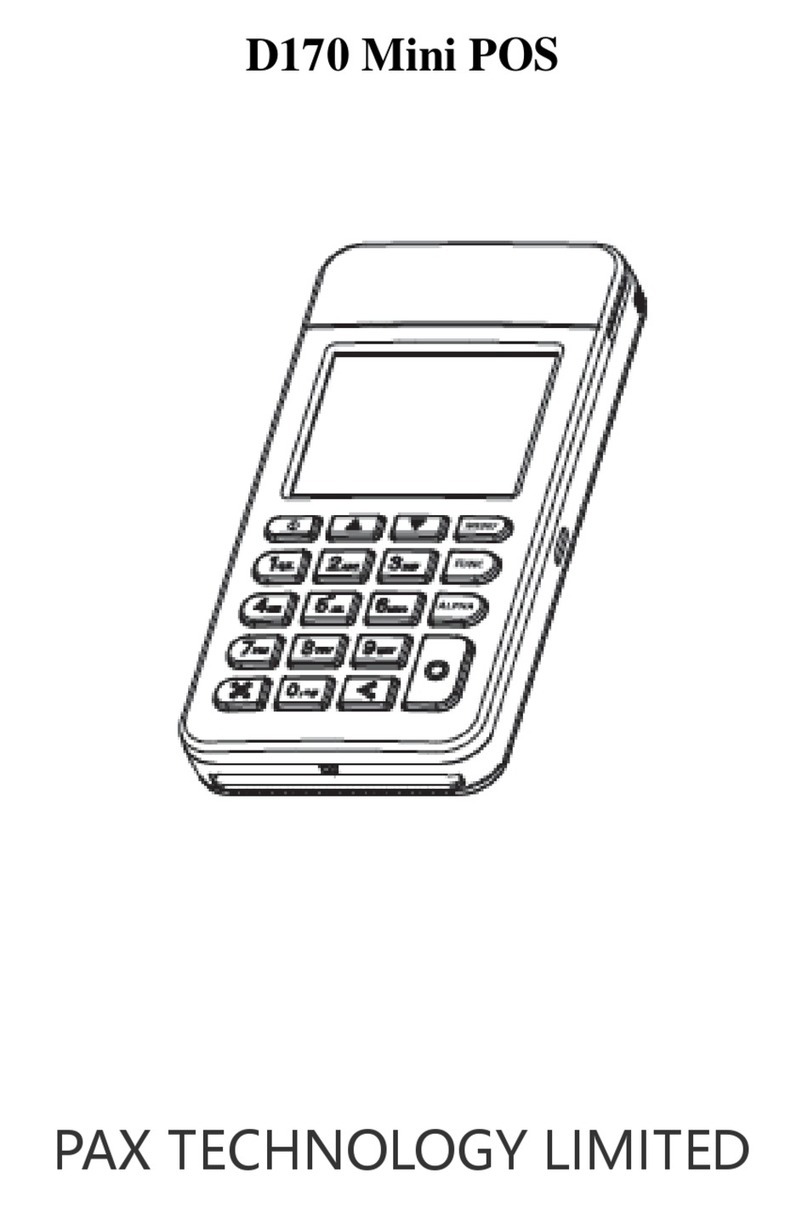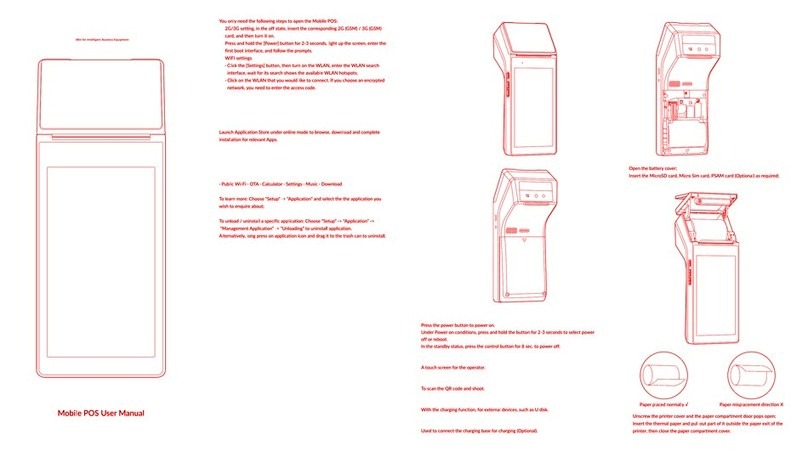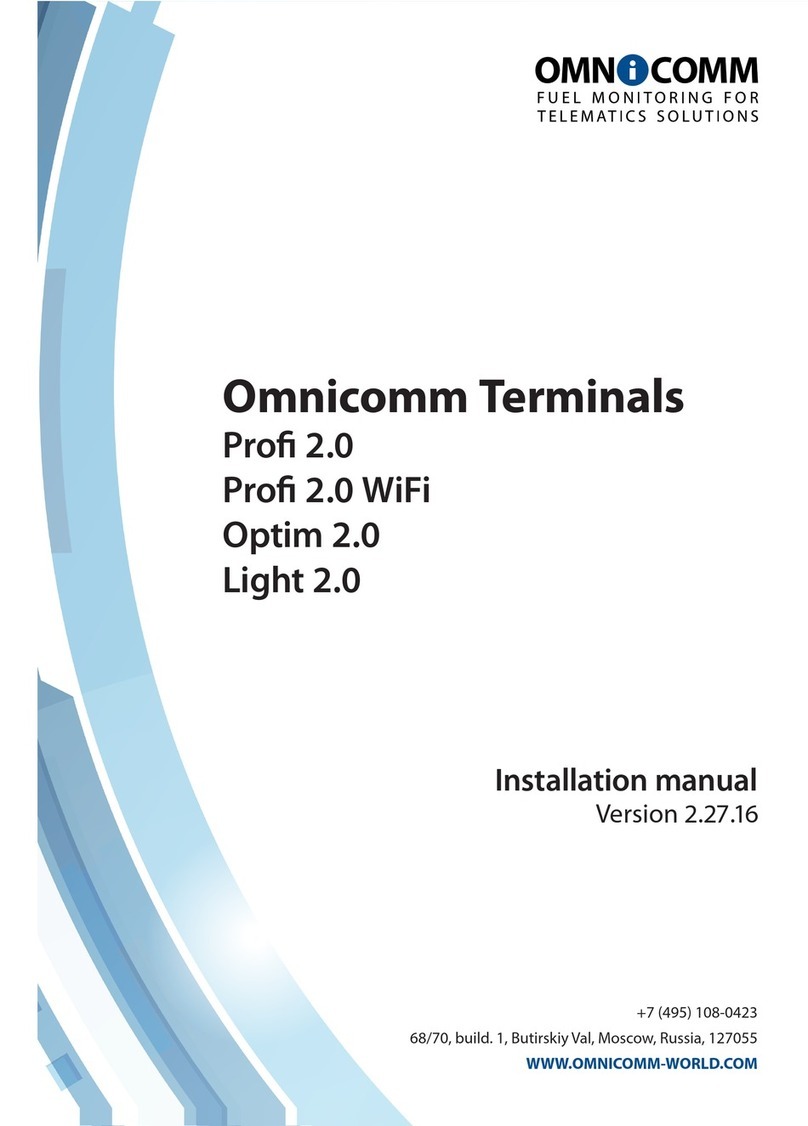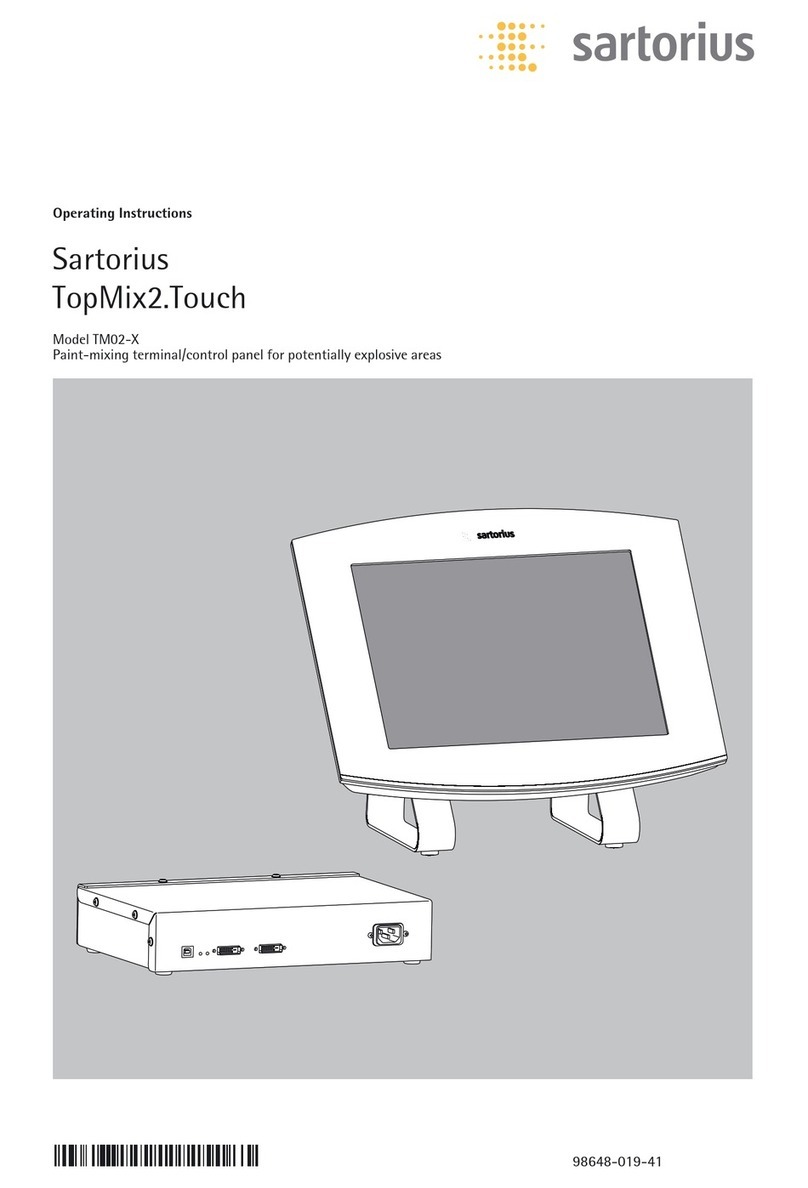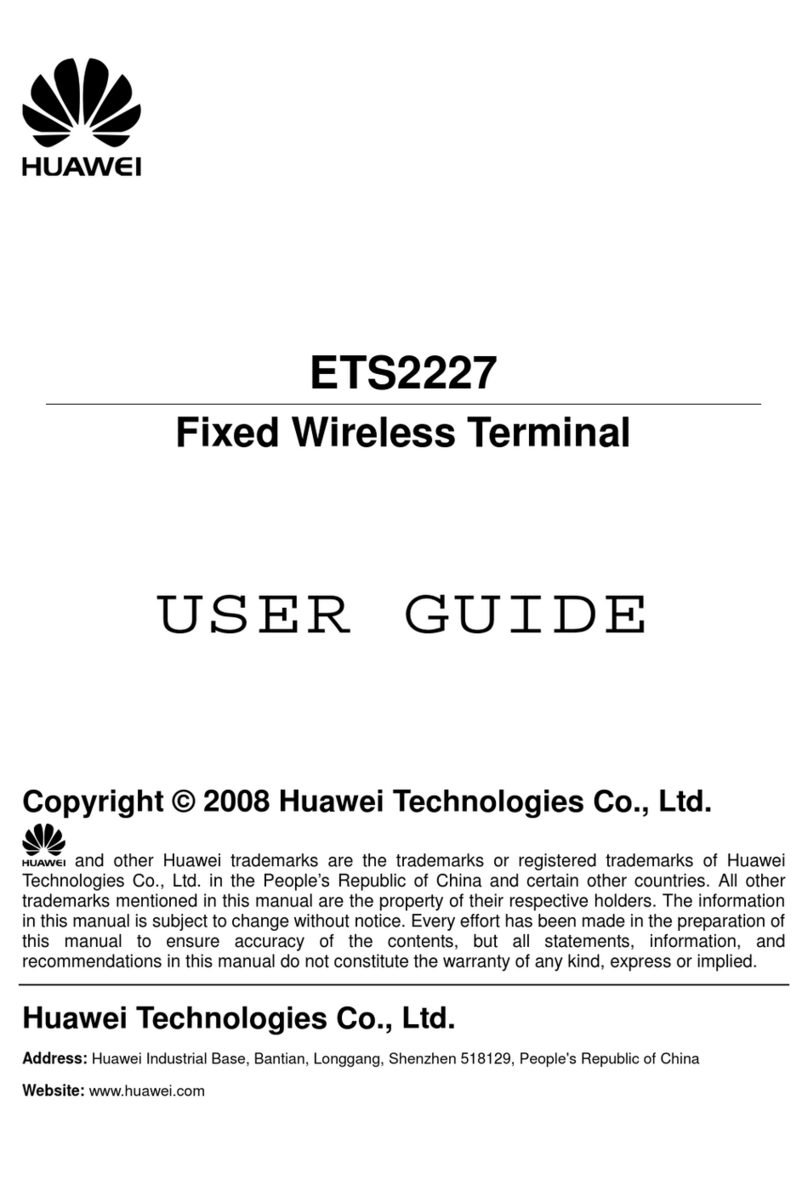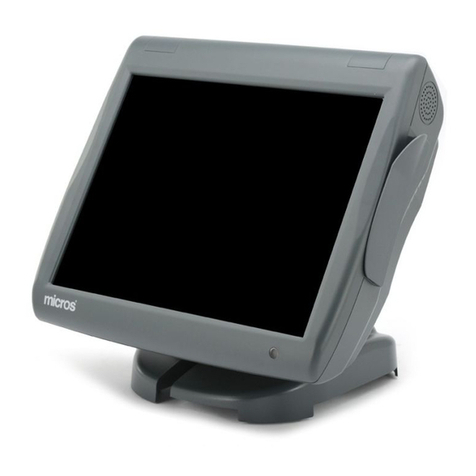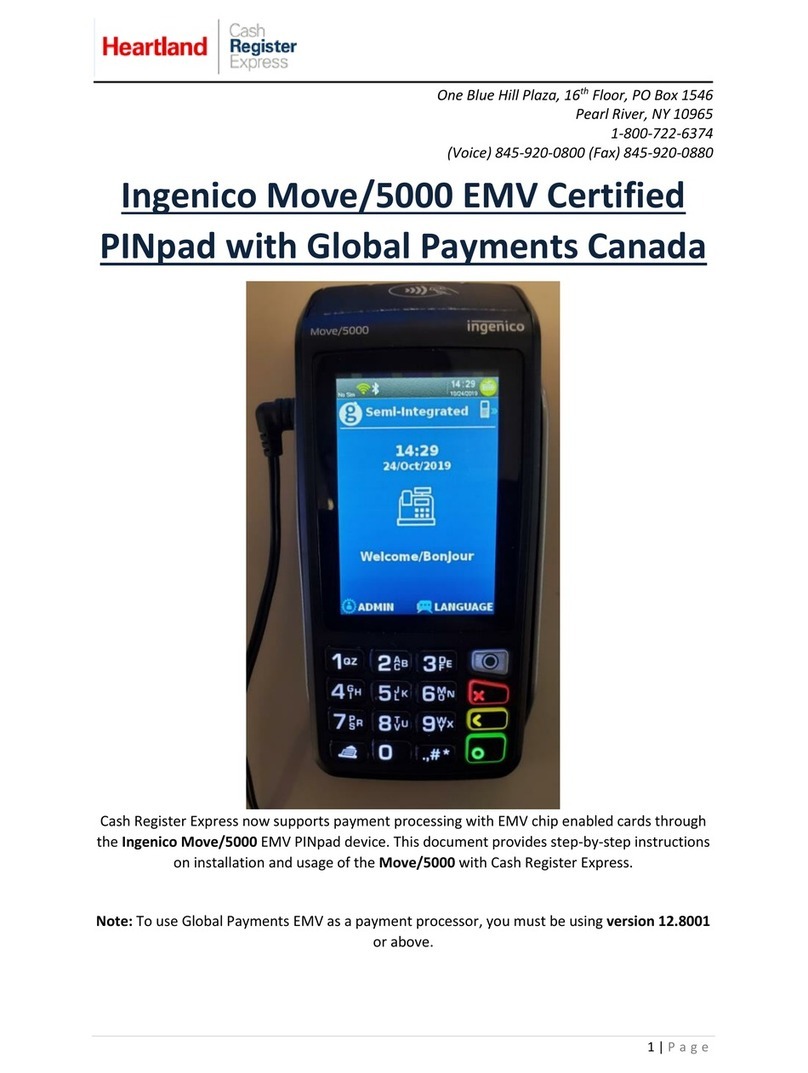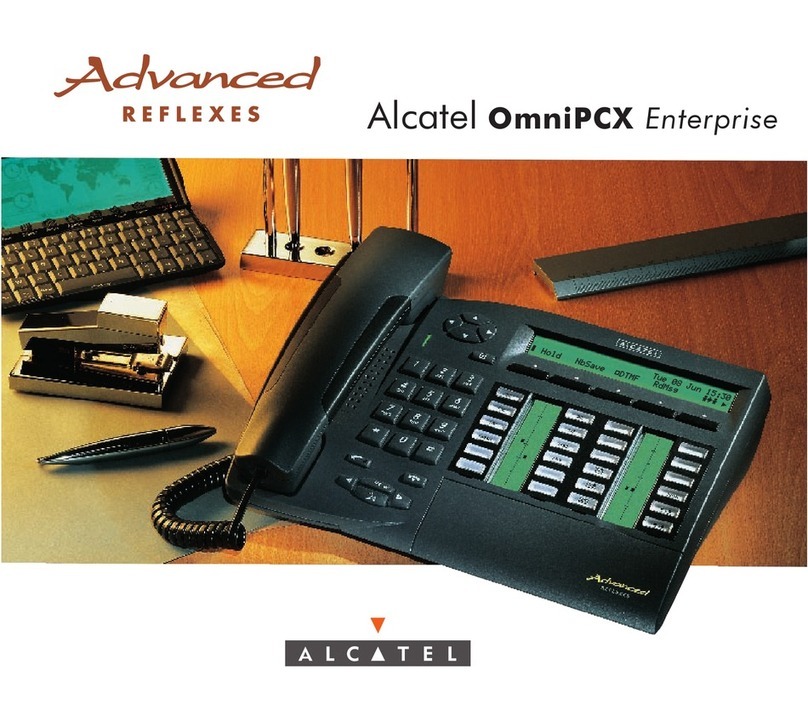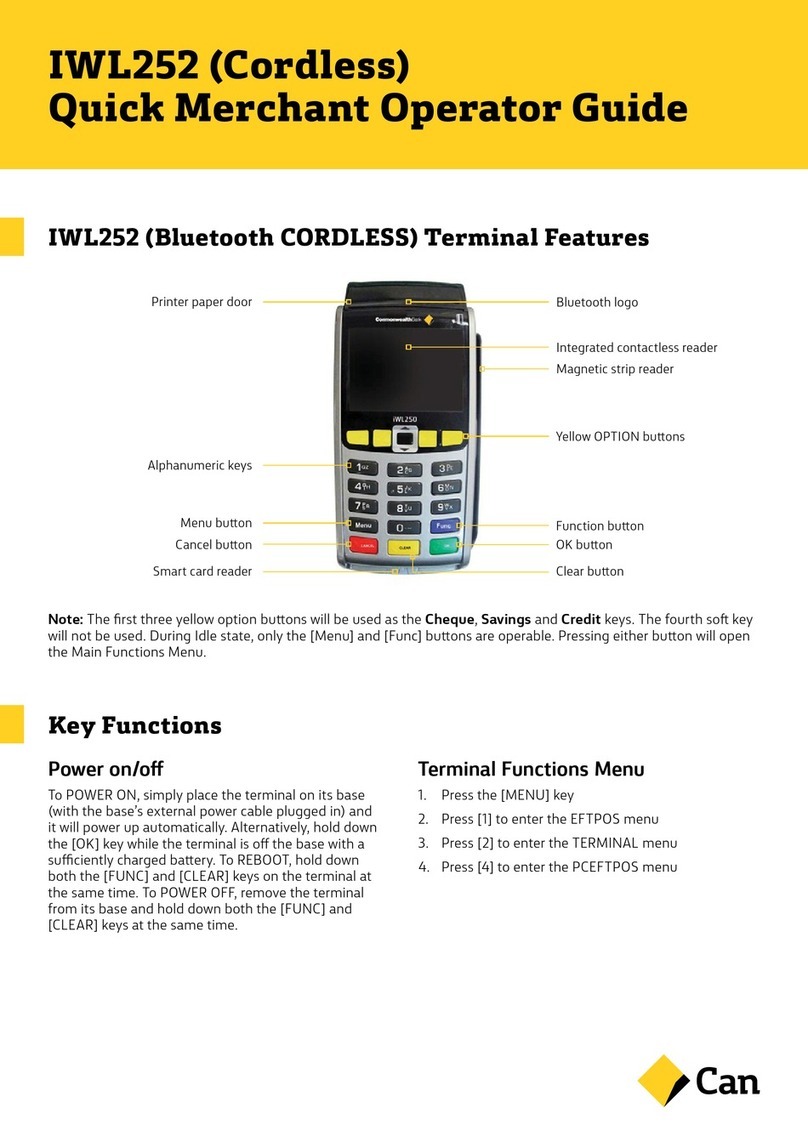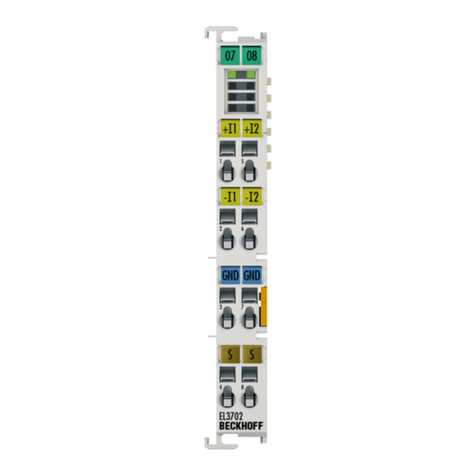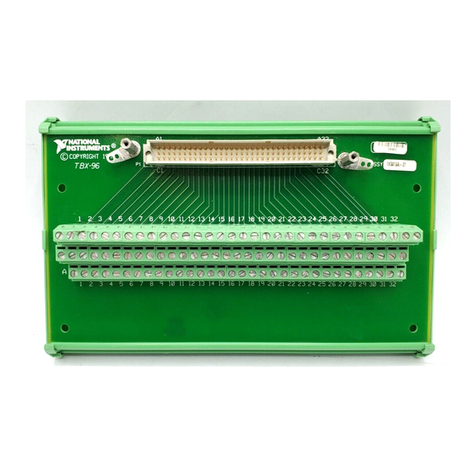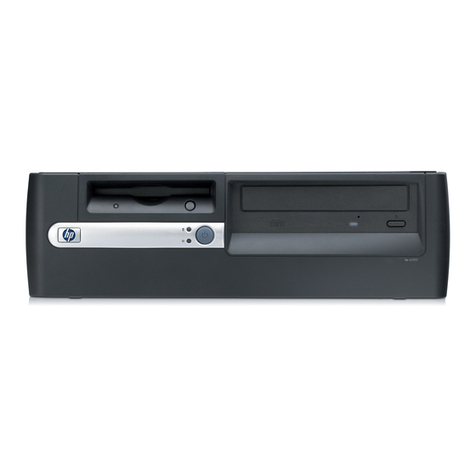Rocket 204 User manual

Rocket Model 204
Terminal User’s Guide
Version 7 Release 4.0
May 2012
204-74-TERM-01

ii
Notices
Edition
Publication date: May 2012
Book number: 204-74-TERM-01
Product version: Rocket Model 204 Terminal User’s Guide
Copyright
© Computer Corporation of America 1989-2012. All Rights Reserved.
Computer Corporation of America is a wholly-owned subsidiary of Rocket Software, Inc.
Trademarks
Rocket is a registered trademark of Rocket Software, Inc. For a list of Rocket registered
trademarks go to: www.rocketsoftware.com/about/legal. All other products or services
mentioned in this document may be covered by the trademarks, service marks, or product
names of their respective owners.
License agreement
This software and the associated documentation are proprietary and confidential to Rocket
Software, Inc., are furnished under license, and may be used and copied only in accordance with
the terms of such license.
Note
This product may contain encryption technology. Many countries prohibit or restrict the use, import,
or export of encryption technologies, and current use, import, and export regulation should be
followed when exporting this product.
Contact information
Web Site: www.rocketsoftware.com
Rocket Software, Inc. Headquarters
77 4th Avenue, Suite 100
Waltham, MA 02451–1468
USA
Tel: +1.617.614.4321
Fax: +1.617.630.7100

iii
Contacting Technical Support
If you have current support and maintenance agreements with Rocket Software and CCA,
contact Rocket Software Technical support by email or by telephone:
Email: m204suppor[email protected]om
Telephone :
North America +1.800.755.4222
United Kingdom/Europe +44 (0) 20 8867 6153
Alternatively, you can access the Rocket Customer Portal and report a problem, download an
update, or read answers to FAQs. You will be prompted to log in with the credentials supplied as
part of your product maintenance agreement.
To log in to the Rocket Customer Portal, go to:
www.rocketsoftware.com/support
and click Rocket M204.

iv

Contents v
Contents
About this Guide
Audience ...................................................................................................................xi
Model 204 documentation set...................................................................................xi
Notation conventions.................................................................................................xi
1 Terminal Processing
In this chapter............................................................................................................ 1
Overview........................................................................................................................1
Supported terminals, access methods, and interfaces .................................................. 2
Supported access methods....................................................................................... 2
Supported SNA Communications Server terminals .................................................. 2
Supported system interfaces..................................................................................... 2
Terminal emulators and the LANGUSER parameter..................................................... 2
Entering input ............................................................................................................3
INMRL and INCCC parameters................................................................................. 3
Line continuation ................................................................................................... 3
Retrieving input.............................................................................................................. 4
RETRVKEY parameter.............................................................................................. 4
Using the Retrieve PF key......................................................................................... 4
Irretrievable input ...................................................................................................... 4
Retrieval example ..................................................................................................... 5
Null input lines........................................................................................................... 5
Controlling output........................................................................................................... 5
Setting OUTMRL....................................................................................................... 6
Setting OUTCCC....................................................................................................... 6
Setting OUTLPP........................................................................................................ 6
Pausing .................................................................................................................... 7
Backpaging ............................................................................................................... 7
Issuing a backpage request......................................................................................8
Full-screen formatting .................................................................................................... 9
Prerequisites ............................................................................................................. 9
Menu feature............................................................................................................. 9
Fill-in screens............................................................................................................ 9
Backpaging screens and menus.............................................................................10
Line-editing characters................................................................................................. 10
ERASE and FLUSH parameters.............................................................................11
Model 204 editors.................................................................................................... 11
Attention interrupt feature............................................................................................. 11
Invoking the attention interrupts.............................................................................. 11
ON ATTENTION statement..................................................................................... 12
Echoing........................................................................................................................13
Physical and logical line echo .................................................................................13
Echoing parameters................................................................................................ 13

vi Rocket Model 204 Terminal User’s Guide
PROMPT and SUB parameters ...................................................................... 14
Operations for line echo.......................................................................................... 14
Echoing examples........................................................................................................ 15
Examples using LECHO and CECHO..................................................................... 15
Examples using LEECHO and CEECHO................................................................ 16
2 Terminal Session
In this chapter.......................................................................................................... 19
Overview...................................................................................................................... 19
Terminal dialog............................................................................................................. 20
Logging in................................................................................................................ 20
Opening a file..........................................................................................................20
Displaying a procedure ........................................................................................... 20
Viewing parameter settings..................................................................................... 21
Resetting parameters.............................................................................................. 21
Entering an ad hoc request..................................................................................... 21
Displaying a stored procedure................................................................................. 22
Executing a procedure and viewing output ............................................................. 22
Defining a new procedure ....................................................................................... 22
Printing the procedure............................................................................................. 23
Deleting a procedure............................................................................................... 23
Logging out ............................................................................................................. 23
Disconnecting from Model 204................................................................................ 23
Getting online............................................................................................................... 23
Logging in.....................................................................................................................24
LOGIN process ....................................................................................................... 24
Sample LOGIN dialog ............................................................................................. 24
Opening a file...............................................................................................................25
Using OPEN with different file types ....................................................................... 25
Opening a public file................................................................................................ 25
Opening a semipublic file........................................................................................ 26
Viewing and changing parameter settings...................................................................26
Using the VIEW command......................................................................................26
Example of the VIEW command.............................................................................27
Running Model 204 requests and procedures ....................................................... 27
Procedures.............................................................................................................. 27
Example .................................................................................................................. 28
Displaying a procedure ................................................................................................ 29
Using the DISPLAY and USE commands............................................................... 29
Sample DISPLAY dialog ........................................................................................ 30
Deleting a procedure.................................................................................................... 31
Using the DELETE command ................................................................................. 31
Recovering from an error ............................................................................................. 31
Prompting and informational messages.................................................................. 32
Counting errors ....................................................................................................... 32
Severe errors .......................................................................................................... 32
Soft restart............................................................................................................... 33
Displaying messages .............................................................................................. 33
Closing a file.................................................................................................................34
Using the CLOSE command................................................................................... 34

Contents vii
Logging out and disconnecting .................................................................................... 34
Using the LOGOUT command................................................................................34
3 SNA Communications Server Terminal
In this chapter.......................................................................................................... 35
Overview...................................................................................................................... 35
Getting online............................................................................................................... 36
Procedures.............................................................................................................. 36
IBM 3270 terminals (IODEV = 7)..................................................................................36
Input lines................................................................................................................ 36
End-of-page pause.................................................................................................. 37
Attention key ........................................................................................................... 37
Canceling the current request.................................................................................37
Logging out and disconnecting ............................................................................... 38
Screen-formatting parameters................................................................................. 38
Terminal model options...........................................................................................38
Output page buffer settings..................................................................................... 39
TERMOPT parameter ............................................................................................. 39
IBM 3767 and NTO terminals (IODEV = 37)................................................................ 40
Input lines................................................................................................................ 40
Pausing and canceling output.................................................................................40
Parameter default values........................................................................................ 41
Resetting parameters.............................................................................................. 41
4 CICS Interface
In this chapter.......................................................................................................... 43
Overview...................................................................................................................... 43
Terminals supported ............................................................................................... 43
Host language applications..................................................................................... 44
Selection of terminal support mode......................................................................... 44
Additional print capabilities......................................................................................44
Invoking and disconnecting from the CICS interface...................................................45
Getting online.......................................................................................................... 45
When full-screen login fails .....................................................................................46
Disconnecting.......................................................................................................... 46
IBM 3270 terminals (IODEV = 11)................................................................................46
Input lines................................................................................................................ 46
Attention key ........................................................................................................... 47
Screen-formatting parameters................................................................................. 47
Terminal model options...........................................................................................47
Output page buffer settings..................................................................................... 48
Page header formats............................................................................................... 48
Pausing and canceling output.................................................................................49
Canceling the current request.................................................................................49
CICS printer ............................................................................................................ 49
IBM 3270 terminals (IODEV = 29)................................................................................50
Output parameters .................................................................................................. 50
Pausing and canceling output.................................................................................50
CICS printer ............................................................................................................ 50
Teletypes (IODEV = 29)............................................................................................... 51

viii Rocket Model 204 Terminal User’s Guide
Output parameters .................................................................................................. 51
Pausing and canceling output.................................................................................51
5 TSO Interface
In this chapter.......................................................................................................... 53
Overview...................................................................................................................... 53
Terminals supported ............................................................................................... 53
Host language applications..................................................................................... 54
Selection of terminal support mode......................................................................... 54
Using a CLIST......................................................................................................... 54
Invoking and disconnecting from the TSO interface .................................................... 54
Getting online.......................................................................................................... 55
CLIST input ............................................................................................................. 56
Return codes........................................................................................................... 58
Input lines................................................................................................................ 58
Backpaging ............................................................................................................. 59
Disconnecting.......................................................................................................... 59
IBM 3270 terminals (IODEV = 11)...............................................................................60
Input lines................................................................................................................ 60
Attention key ........................................................................................................... 60
Screen-formatting parameters................................................................................. 60
Terminal model options..........................................................................................61
Output page buffer settings..................................................................................... 61
Page header formats............................................................................................... 62
Pausing and canceling output.................................................................................62
Canceling the current request.................................................................................62
IBM 3270 terminals (IODEV = 29)................................................................................63
PA1 key................................................................................................................... 63
Output parameters .................................................................................................. 63
Pausing and canceling output.................................................................................63
Teletypes (IODEV = 29)............................................................................................... 64
Output parameters .................................................................................................. 64
Pausing and canceling output.................................................................................64
6 CMS Terminal Interface
In this chapter.......................................................................................................... 67
Overview...................................................................................................................... 67
Terminals supported ............................................................................................... 67
Selection of terminal support mode......................................................................... 68
Invoking and disconnecting from the CMS terminal interface...................................... 68
Getting online.......................................................................................................... 68
M204 EXEC ............................................................................................................ 68
M204 EXEC options................................................................................................ 69
Input lines................................................................................................................ 71
PF keys ................................................................................................................... 71
Disconnecting.......................................................................................................... 71
Turning off the terminal ...........................................................................................71
IBM 3270 terminals (IODEV = 41, ALTIODEV =47)..................................................... 72
Attention key ........................................................................................................... 72
Pausing and canceling output.................................................................................72

Contents ix
Screen-formatting parameters................................................................................. 73
Terminal model options...........................................................................................73
Output page buffer settings..................................................................................... 74
Page header formats............................................................................................... 74
Handling messages from other terminals................................................................ 74
Teletype terminals (IODEV = 39, ALTIODEV = 45).....................................................75
Attention key ........................................................................................................... 75
Pausing and canceling output.................................................................................75
Parameters.............................................................................................................. 76
Page header formats............................................................................................... 76
Line-editing characters............................................................................................ 77
7 INTERCOMM Interface
In this chapter.......................................................................................................... 79
Overview...................................................................................................................... 79
Terminals supported ............................................................................................... 79
Host language applications..................................................................................... 80
Invoking and disconnecting from INTERCOMM .......................................................... 80
Getting online.......................................................................................................... 80
Output parameters .................................................................................................. 81
Pausing and canceling output.................................................................................81
Disconnecting.......................................................................................................... 82
Index

x Rocket Model 204 Terminal User’s Guide

About this guide xi
About this Guide
The Terminal User’s Guide describes the operation and use of the Model 204
Database Management System through a variety of terminals, access
methods, and system interfaces.
Audience
This guide is written for both programmers and users who have no
programming experience. Familiarity with Model 204 User Language is
presumed. However, to use this guide, no further technical knowledge is
required.
Model 204 documentation set
The complete commercially released documentation for the latest version of
Model 204 is available for download from the Rocket M204 customer portal.
To access the Rocket Model 204 documentation:
1. Navigate to:
http://www.rocketsoftware.com/m204
2. From the drop-down menu, select Products > Model 204 >
Documentation.
3. Click the link to the current release and select the document you want from
the list.
4. Click the .zip file containing the document.
5. Choose whether to open or save the document:
– Select Open and double-click the pdf file to open the document.
– Select Save as and select a location to save the zip file to.
Notation conventions
This guide uses the following standard notation conventions in statement syntax and
examples:
Convention Description
TABLE Uppercase represents a keyword that you
must enter exactly as shown.

xii Rocket Model 204 Terminal User’s Guide
TABLE tablename In text, italics are used for variables and for
emphasis. In examples, italics denote a
variable value that you must supply. In this
example, you must supply a value for
tablename.
READ [SCREEN] Square brackets ( [ ] ) enclose an optional
argument or portion of an argument. In this
case, specify READ or READ SCREEN.
UNIQUE | PRIMARY KEY Averticalbar(| )separatesalternativeoptions.
In this example, specify either UNIQUE or
PRIMARY KEY.
TRUST | NOTRUST Underlining indicates the default. In this
example, NOTRUST is the default.
IS {NOT | LIKE} Braces ( { } ) indicate that one of the enclosed
alternatives is required. In this example, you
must specify either IS NOT or IS LIKE.
item ... An ellipsis ( . . . ) indicates that you can repeat
the preceding item.
item ,... Anellipsisprecededby acommaindicatesthat
a comma is required to separate repeated
items.
All other symbols In syntax, all other symbols (such as
parentheses)areliteralsyntacticelementsand
must appear as shown.
nested-key ::=
column_name
A double colon followed by an equal sign
indicates an equivalence. In this case, nested-
key is equivalent to column_name.
Enter your account:
sales11
In examples that include both system-supplied
and user-entered text, or system prompts and
user commands, boldface indicates what you
enter. In this example, the system prompts for
an account and the user enters sales11.
File > Save As A right angle bracket (>) identifies the
sequence of actions that you perform to select
a command from a pulldown menu. In this
example, select the Save As command from
the File menu.
EDIT Partialboldingindicatesausable abbreviation,
such as E for EDIT in this example.
Convention Description

Terminal Processing 1
1
Terminal Processing
In this chapter
•Overview
• Supported terminals, access methods, and interfaces
• Entering input
• Retrieving input
• Controlling output
• Full-screen formatting
• Line-editing characters
• Attention interrupt feature
• Echoing
• Echoing examples
Overview
This chapter provides information about the different types of terminals
andsysteminterfacesthatModel 204supports.Italsoprovidesgeneral
information that applies to all these types of terminals.
Chapter 2 provides a sample terminal session in which a user connects
to Model 204, logs in, opens a file, and retrieves selected data. The rest
of the chapters summarize the distinctive characteristics of each
terminal type, access method, or system interface.

2 Rocket Model 204 Terminal User’s Guide
Supported terminals, access methods, and interfaces
Each terminal category, system interface, and access method has its own
unique operating characteristics such as display formats, keying procedures,
pause and disconnect capabilities, and other special features. Read this
chapter and Chapter 2 for general information, and then refer to the chapters
thatdescribetheyourownterminaltype,systeminterface,andaccessmethod.
Supported terminals, access methods, and interfaces
Supported access methods
Model 204 provides support for a variety of terminals that use the SNA
Communications Server (formerly VTAM) (Virtual Telecommunications Access
Method)
Supported SNA Communications Server terminals
SNA Communications Server supports the following terminals:
• IBM 3270s and compatible terminals
• IBM 3767 terminals
• Terminal types supported by the IBM Network Terminal Option (NTO)
Supported system interfaces
Model 204 also can be accessed by means of one of the following system
interfaces:
• CICS (as a transaction)
• TSO (as a command processor or as a called program)
• CMS (via the Inter-User Communication Vehicle)
• INTERCOMM (as a subsystem)
Terminal emulators and the LANGUSER parameter
Many different terminal emulators are in existence today. You must ensure that
the terminal emulator you use sends characters to the mainframe that are
compatible with the characters that are defined in the IBM code page for the
particular LANGUSER value set at your site. (See the Model 204 Language
Support Summary.) In the event that certain characters from the your terminal
emulator are not compatible with the IBM code page, you must provide
translation commands for those particular characters. For example, the
terminal emulator hexadecimal code for a particular character must be
translated to the IBM hexadecimal code for the same character.
Note: Anunderlyingproblem couldappear ifyou storeincompatiblecharacters
into a Model 204 file using one terminal emulator and attempt to retrieve them

Terminal Processing 3
Entering input
with a different terminal emulator that has different hexadecimal codes for the
particular characters.
In z/VM, for example, if LANGUSER=US you could use the following SET
OUTPUT commands to translate the left ([) and right (]) bracket characters:
’SET OUTPUT ad’ ’ba’x /* Display TN square brackets */
’SET OUTPUT bd’ ’bb’x
’SET INPUT ’ba’x ad /* Transform Chameleon sq brackets */
’SET INPUT ’bb’x ’bd’ /* to ones that C/370, LEXMARK, 7171 use */
Entering input
INMRL and INCCC parameters
In general, terminal input lines should not be longer than the line length of the
terminal. However, the settings of the INMRL and INCCC parameters
(described in the Model 204 Parameter and Command Reference Manual)
actually determine the maximum input line length at a particular terminal.
INMRL and INCCC usually are set by the system manager for each terminal in
the system. For 3270s, INMRL and INCCC also can be reset as a result of
resetting the MODEL parameter. MODEL allows for alternate screen sizes
within the 3270 family and is described in detail in the Model 204 Parameter
and Command Reference Manual.
The INMRL parameter specifies the maximum number of characters that the
user can enter on an input line. If the user attempts to enter a line that is longer
than the value of INMRL, the following error message is displayed:
*** M204.0481: TERMINAL INPUT LINE TOO LONG - IGNORED
and Model 204 ignores the entire line.
Line continuation
Lines that are longer than the value of INMRL can be continued. There are two
types of line continuations. When entering a User Language request or a
response to a $READ or $ENTER prompt, the user can enter a long line by
breaking it into several shorter lines and entering each one separately, adding
a hyphen to the end of all but the last line. Lines continued in this manner have
no maximum length. For more information on line continuation, refer to the
Model 204 User Language Manual.
Other types of input lines can be broken up by entering a nonblank character
in the column position specified by the INCCC parameter on all but the last line.
The number of characters in all portions of the input line (the original line and
all continuations, not including the continuation characters) is limited to the
value of the LIBUFF (length of the input buffer) parameter. If the complete line
exceeds LIBUFF, the line is lost and the following message is displayed:
*** M204.1251: LINE TOO LONG

4 Rocket Model 204 Terminal User’s Guide
Retrieving input
If the value of INMRL is greater than the value of INCCC, and a nonblank
character is in the column position specified by the INCCC parameter, any
characters past this column position are lost. IF INCCC is set to zero, lines
cannot be continued by using the INCCC facility; however, these lines can be
continued by using hyphens.
Note: Any attempt to enter input while a terminal is displaying a line of output
produces unpredictable results.
Retrieving input
For all 3270 or compatible full-screen terminals, previously-entered line input
canbe retrieved forreview or modificationby usinga PF key. Full-screenEditor
or User Language screen input, however, cannot be retrieved in this way.
Retrieved input lines are returned to the command line of the user’s terminal
from where they can be reissued.
RETRVKEY parameter
For a 3270 or compatible full-screen terminals, setting the Model 204
RETRVKEY parameter to a value from 1 to 24 designates a PF (program
function) key whose number equals that value as the user’s Retrieve PF Key.
For example, RETRVKEY = 3 means that PF key 3 is the Retrieve PF Key.
Using the Retrieve PF key
If the Retrieve PF key is pressed when Model 204 requests a new input line
from the user’s terminal, Model 204 displays the user’s most recently entered
input line. The user can then perform any of the following actions:
• Press Enter; the unmodified input line is sent to Model 204.
• Using the 3270 cursor, insert, and delete keys, and the normal character
keys, modify the input line and press Enter. The modified input line is sent
to Model 204.
• Press the Retrieve PF key again. Model 204 displays the input line
precedingtheone justdisplayed,andthe usercanrepeatany oftheactions
in this list.
Only a limited amount (as many as 268 bytes) of the user’s previous input is
available for retrieval. The input lines are kept in a circular format: if the
Retrieve PF key is pressed enough times to display the oldest available input
line and then is pressed again, the most recent input line (the first retrieved) is
redisplayed and the entire sequence begins again.
Irretrievable input
Input for which or situations in which the Retrieve PF Key does not work are
listed below. The following input lines are not saved for retrieval:

Terminal Processing 5
Controlling output
• Passwords and responses to the $READINV function
• Backpage requests
• Null input lines
• Lines directly handled by a system interface (for example, the z/OS
SUBSET string)
• All but the first of a sequence of duplicate input lines (if a null input line is
entered between the duplicate input lines)
Retrieval example
For example, if the following input lines are entered:
LOGIN JON
<password>
TIME
V VERSION
(a null input line)
V VERSION
Two lines are available for retrieval:
V VERSION
TIME
Null input lines
In the following cases, the Retrieve PF key returns a null input line to the
terminal rather than performing the retrieve function:
• Passwords and responses to the $READINV function
• Responses to the end-of-page prompt
• Responses to certain indented error prompts (for example, INVALID
BACKPAGE REQUEST)
• All lines saved for retrieval are cleared if the RESET MODEL command is
used to change from MODEL 5 to some other value.
• The Retrieve PF key is not recognized if the input line entered is a line that
is directly handled by a system interface (for example, the CMS SUBSET
string).
Controlling output
Output on most terminals is displayed one line at a time. The format of terminal
output is controlled by the settings of several parameters. This section
discusses three of them:

6 Rocket Model 204 Terminal User’s Guide
Controlling output
• OUTMRL and OUTCCC parameter settings specify the maximum output
line length at a particular terminal.
• OUTLPP determines the number of lines on an output page.
OUTMRL, OUTCCC, and OUTLPP usually are set by the system manager for
each terminal in the system. For 3270s, these three parameters can be reset
as a result of resetting the MODEL parameter. MODEL allows for alternate
screen sizes within the 3270 family and is described in the Model 204
Parameter and Command Reference Manual. OUTMRL and OUTCCC can be
reset individually, independent of the MODEL parameter setting, but OUTLPP
is determined by MODEL, and can only be reset as the result of resetting the
MODEL parameter for 3270s.
Settings of the HDRCTL and TERMOPT parameters that can affect output
displays and pauses are discussed in chapters 3 through 9 of this manual,
which discuss individual types of terminals.
Note: Any attempt to enter input while a terminal is displaying a line of output
will produce unpredictable results.
Setting OUTMRL
The OUTMRL parameter specifies the maximum number of characters that
Model 204 can display on anoutput line at a particular terminal. Note, however,
that the number of characters specified in OUTMRL can be greater than the
physical line length of the terminal being used. If the terminal is a CRT device,
along linewrapsaround andsomeof thecharacters aredisplayed ona second
line. If the terminal is a hard-copy device, the characters beyond the last
character on the physical line can be lost.
Setting OUTCCC
The OUTCCC parameter specifies the last available output position on the line.
When Model 204 displays a line, it uses the smaller value of OUTMRL and
OUTCCC as a line length. If the line is longer than this, a hyphen is placed in
the column position specified by OUTCCC, and the rest of the characters are
continued on subsequent lines. Any number of lines can be continued in this
fashion.
OUTCCC can be reset by theuser for 3270 terminals. The reset value remains
in effect for the thread even after the user logs out.
If OUTCCC is set to zero, the value of OUTMRL is the maximum line length.
No continuation occurs, and any text beyond the value of OUTMRL is lost.
Setting OUTLPP
The OUTLPP parameter specifies the number of lines on an output page,
including headers and trailers. OUTLPP can be reset by the user. However, for

Terminal Processing 7
Controlling output
3270s, OUTLPP can only be reset as a result of resetting the MODEL
parameter.
Model 204normally displays a line showing the current date in Julian date
format, the current date in mon dd format, the time in hh.mm.ss format, and
page number at the top of each page of output. For example:
91.010 JAN 10 05.15.29 PAGE 37
The page number is incremented automatically as new pages are produced.
The user can specify alternative headers as described in the Model 204 User
Language Manual.
If the user has requested a page trailer, Model 204 displays it at the bottom of
every page. Model 204 also pauses at the end of each page of output to allow
the user to cancel future output, to change the terminal paper, or to read text
that is displayed on a screen.
Production of all headers and trailers, except for the header on the first page,
can be cancelled by setting the OUTLPP parameter to zero on hard-copy
terminals. Setting OUTLPP = 0 also causes the pause at the bottom of each
page to be suppressed. Output is displayed in a steady stream. Setting the
OUTLPP parameter to -1 eliminates page counting, but it displays headers and
trailers when a NEW PAGE command causes output of a new page.
Pausing
On all terminals described in this manual, Model 204 can pause at the bottom
ofthepageandwaitfor theusertorespond beforecontinuing.Ifoutputconsists
of more than a single page, Model 204 will display one page or screen, pause
at the bottom of the page or screen to await a user response, and continue
displaying output at the top of the next page or screen after the user has
requested continuation.
When Model 204 pauses at the bottom of a page while displaying output, the
user’sresponse dependsupontheterminalbeingused.(Avarietyofresponses
are described in subsequent sections.) If the user enters an input line instead
of one of the expected responses, Model 204 saves this line in most cases.
Output continues on the next page, and the saved input line is processed after
the output is completed. However, if Model 204 fills another complete page or
screen with output and once again pauses for a user response, the response
causes the saved input line to be lost. Input lines entered in this fashion are
never saved by the CICS, TSO, CMS, or INTERCOMM interfaces.
If the last line of a page is used for input, Model 204 does not pause at the
bottom of the page.
Backpaging
Model 204 supports a backpaging feature that allows the user to review
previous pages of output. This feature is very useful to users of terminals that

8 Rocket Model 204 Terminal User’s Guide
Controlling output
do not produce hard copy. The backpaging feature is available only if the
system manager sets the NBKPG (number of backpages) parameter to a
positive number during system initialization. Refer to the Model 204 Parameter
and Command Reference Manual for a description of NBKPG and the other
parameters that affect terminal operations.
Note: The backpaging feature is not available on all types of terminals and is
not available during editing sessions.
Issuing a backpage request
When the terminal is ready to accept input, the user can request (except during
editing) to have a backpage displayed by entering the backpage character, a
single space, and a negative number. An appropriate backpage character can
be selected by the system manager and specified as the value of the PAGE
parameter. PAGE has a default value of P and can be reset by the user. Refer
to the Model 204 Parameter and Command Reference Manual for a complete
discussion of the PAGE parameter.
For example, a user who is on page 17 and who wants to see page 16 enters:
P -1
Because Model 204 prepares for a new page before pausing at the bottom of
a full page, at the following backpage request, entered at the end-of-page
pause displays the page just ended:
P -1
A backpage request entered after an editing session refers only to output prior
to the editing. That is, the user cannot page back into output generated as part
of an editing session. Model 204 treats the backpage request as if that session
did not occur.
If the user tries to page back beyond the number of backpages saved, the
oldest available backpage is displayed. Ifthe user tries to page forward beyond
the most recent page (by using P followed by a positive number), that page is
displayed. If the syntax of the PAGE parameter is invalid or the backpaging
facility is not available to the terminal user, Model 204 responds:
*INVALID PAGE REQUEST*
This system response is followed by another prompt.
If the MODEL parameter is reset during a terminal session, the page size is
redefined, and any existing backpages can no longer be displayed.
Whether or not the backpage request is valid, the terminal returns to input
mode. The user can backpage again or enter a new line of input, which then is
displayed in its proper place on the next most recent page.
Table of contents
